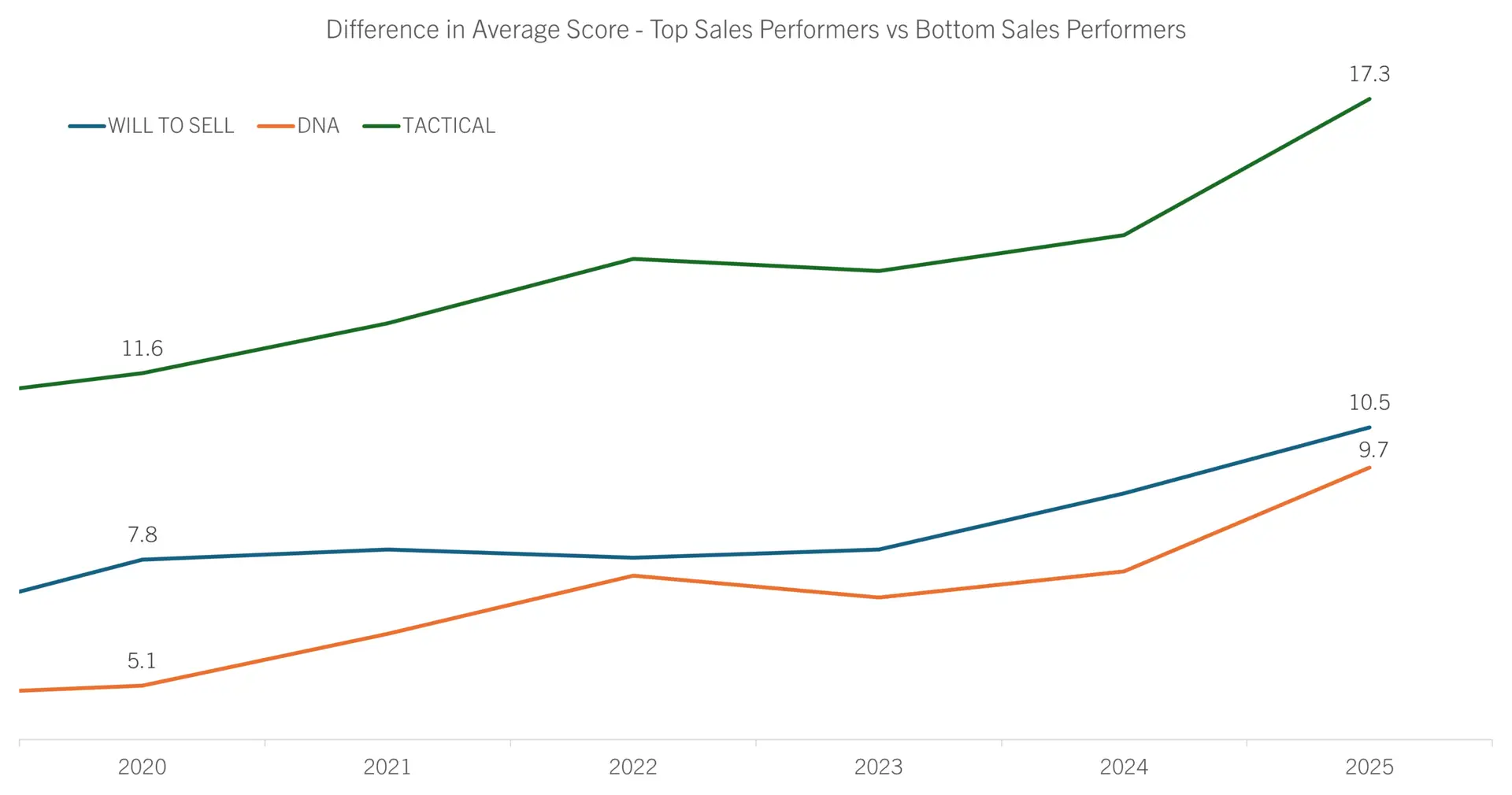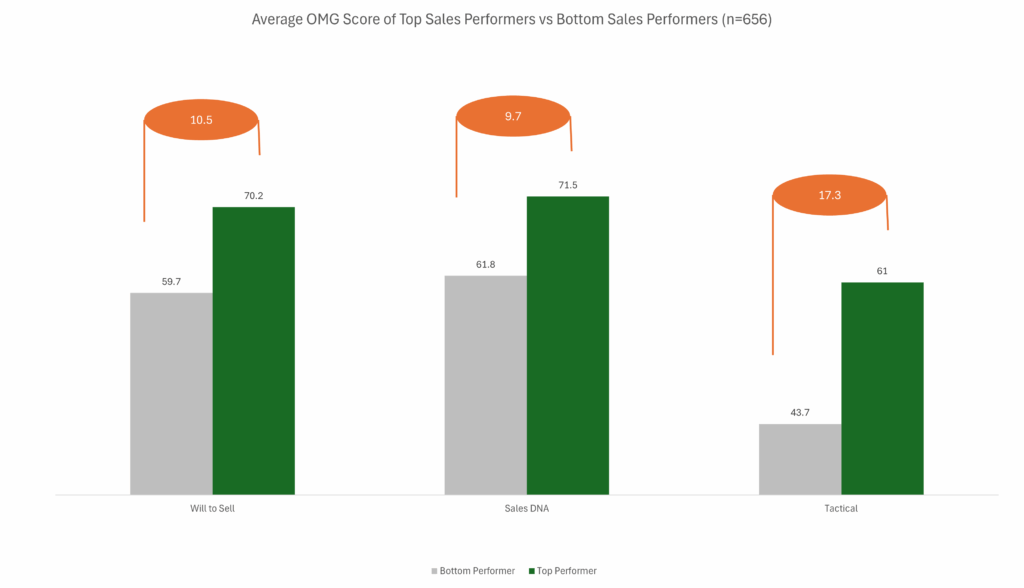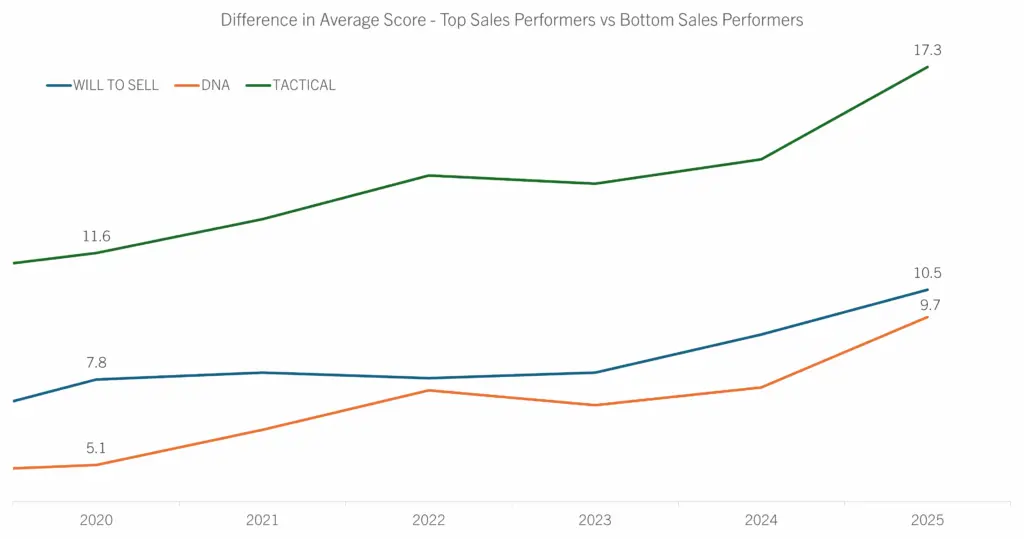
The Real Power of Predictive Sales Assessments: Seeing What Others Can’t
Why the strength of any model lies in its ability to separate success from struggle.
At OMG, we believe in empowering sales organizations through clarity. And clarity starts with knowing who will thrive—and who may need support.
In sales, not all assessments are created equal. The true value of any predictive model—whether you’re measuring creditworthiness, ad targeting, or sales skills—is in how well it can forecast real-world outcomes.
In our case, the outcome we care most about is success in sales.
At Objective Management Group (OMG), we use data to predict whether a salesperson is likely to succeed. But we don’t stop at theory—we track how well our model actually works by comparing assessment scores to real-world sales performance.
So, how do we know it’s working?
We look at two groups:
Top performers—those with above-average win rates and high-performance ratings from their companies.
Low performers—those who fall short on both.
And the difference between these two groups? It’s not just noticeable – it’s statistically significant. Our top performers consistently score higher on OMG assessments, with results separating out by a margin of three standard deviations. That means the model isn’t just accurate—it’s highly predictive.
Getting Stronger with Time
What excites us even more is this: the gap between high and low performers is growing.
Over time, our model has become even better at identifying the attributes of successful salespeople. That’s because we’re constantly learning. As more data flows in, our understanding sharpens—and so does the assessment’s predictive power.
This matters, because it helps sales organizations make better hiring decisions, build stronger teams, and provide the right coaching where it’s needed most.
Why it matters: It’s not just about predicting performance – it’s about unlocking potential.
Our goal isn’t just to sort people into “good” or “bad” buckets. It’s to give sales leaders clarity. To help them recognize top talent, support those on the rise, and invest in the kind of coaching that changes careers.
That’s what predictive modeling should do.
It should see what others can’t—and help people grow because of it.



